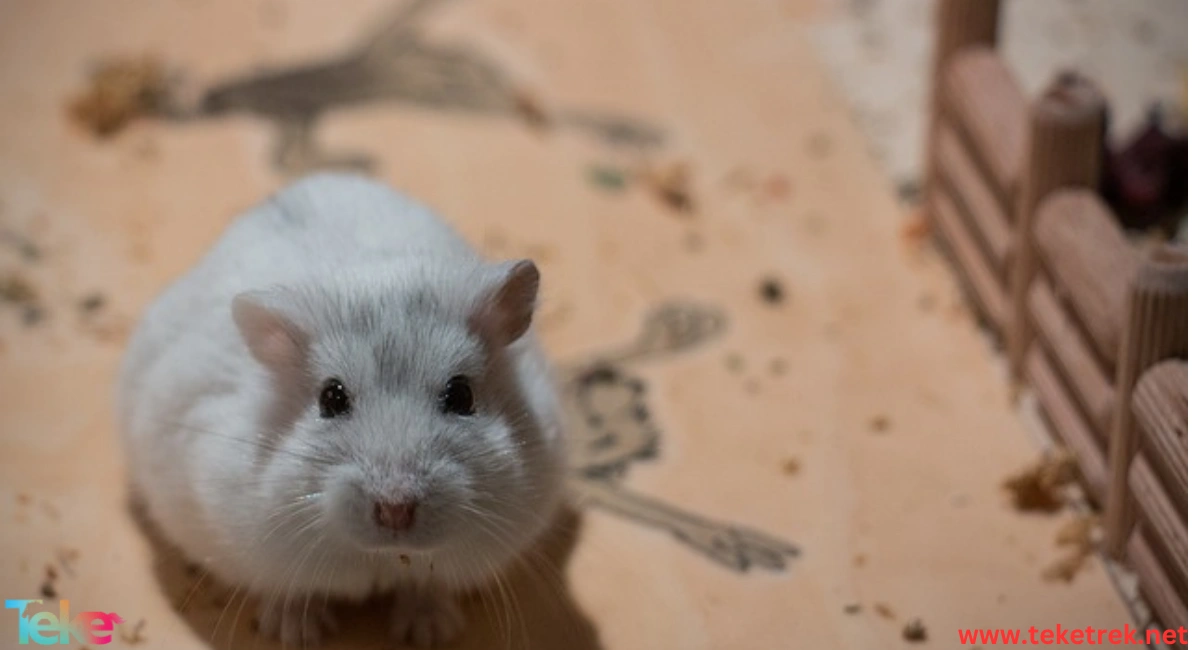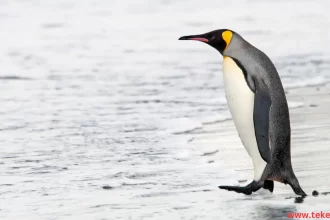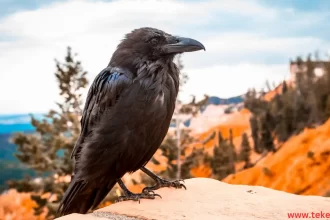Have you heard about the dwarf hamster before?
In fact, there are multiple types of hamsters, and one of the most famous is the dwarf hamster, which also branches into several types, including the Russian dwarf hamster.
The Russian dwarf hamster is considered a cute and beloved animal by many people, and therefore in this article from teketrek, we will clarify important facts and information about the Russian dwarf hamster and how to care for it.

What are the characteristics of the Russian dwarf hamster?
The Russian dwarf hamster belongs to the chordates, subphylum vertebrates, class mammals, and is one of the types of rodents, belonging to the Cricetidae family.
The Russian dwarf hamster is named so due to its incredibly small size, usually reaching a length of only 2 to 4 inches.
The color of the Winter White Dwarf Hamster changes from gray and white to brown and white, depending on the season.
This transformation allows them to camouflage from potential predators.
The lips and cheeks of the Russian dwarf hamster are characterized by white fur, while the rest of the fur around the face is either gray or white.
The Russian dwarf hamster has incredibly small ears covered with gray-brown hair, the surface of the hands and feet is white, to ensure the hamster stays warm in cold climates like Mongolia.
It resembles mice more than hamsters.
Where does the Russian dwarf hamster live?
The Russian dwarf hamster is found throughout Central Asia, the Altai Mountains, and the autonomous region of Tuva.
As well as Hebei Province in northeastern China.
This hamster’s preferred place is semi-desert areas, and it usually lives in burrows containing 4-6 horizontal and vertical tunnels.
What is the lifestyle of the Russian dwarf hamster?
The Russian dwarf hamster is usually solitary in the wild, while individuals in captivity often do not mind the presence of other species in their territories.
The Russian dwarf hamster is a nocturnal animal, feeding at night and capable of traveling up to one mile in search of food.
Due to the expandable pouches on the cheeks of the Russian dwarf hamster, which can contain large amounts of food, it is able to store food or bedding while searching for food at night.
Usually, it carries food in its cheeks, then stores it in its burrows.
The depth of the burrow reaches 3 meters underground, and each burrow has several exits and entrances and consists of comfortable chambers.
They usually line the walls of these rooms with sheep’s wool and dry grass for more comfort.
When threatened, these animals quickly enter one of the burrow’s entrances and thus escape from the predator.
What is the diet of the Russian dwarf hamster?
The Russian dwarf hamster is a herbivorous plant-eater and a grain-eater.
The Russian dwarf hamster feeds on seeds, nuts, plants, as well as small invertebrates and insects.
It is known that the Russian dwarf hamster eats corn, oats, sunflowers, in addition to peanuts, dried fruits, dried vegetables, and alfalfa.
What are the breeding stages of the Russian dwarf hamster?
The Russian dwarf hamster is polygamous, meaning that both males and females have several partners.
Different groups of this species breed at different times of the year, depending on the location.
The breeding season for the Russian dwarf hamster begins in April for the inhabitants of Tuva, and in May for the Transbaikal regions in Mongolia.
The Russian dwarf hamster usually breeds until early September or October.
In the wild, Campbell’s hamster usually produces between 3 to 4 young out of an average of 7 young annually.
The gestation period for those in captivity lasts from 18 to 20 days.
So far, the shortest recorded gestation period for Campbell’s hamster in captivity is 13 days.
The parents take care of the young until they are 17 days old, after which they are weaned.
Male Russian dwarf hamsters mature at the age of 23 days, while females reach reproductive maturity at the age of 48 days.
The young Russian dwarf hamsters must stay with their mother until they are weaned at the age of three weeks.
Their eyes do not open until they are about two weeks old, and they are colorblind from birth.
By the eighteenth day of their lives, you will be able to see their small ears popping out.
These creatures are deaf and hairless at birth, although their fur will begin to appear when they are about five years old.
Is the Russian dwarf hamster a good pet?
The Russian dwarf hamster is a very friendly pet, and its breeding and care are not expensive at all.
Whether you want to own a pet for the first time or are looking for a fun animal to add some entertainment to your atmosphere, the Russian dwarf hamster is one of the best options.
You can keep one hamster alone or choose a group of hamsters to live together in a large cage.
Remember that Russian hamsters are nocturnal animals, so they are more active at night and can add an atmosphere of fun after a long day of work.
Russian dwarf hamster animals love movement and activity, and for this reason, buying a lot of toys and a good exercise wheel is necessary.
Make sure to choose a cage with plenty of space for running and exploring.
The Russian dwarf hamster is suitable for children of average age, as it is a very sensitive creature and cannot be dropped from any height.
It is also very fast, which makes handling it more difficult in the absence of awareness.

Some common questions about the Russian dwarf hamster?
- What is the lifespan of a white dwarf hamster?
The average lifespan of the Russian dwarf hamster is two to three years.
- Does the dwarf hamster like to play with you?
Initially, these types of hamsters are somewhat shy, which means you will have to learn how to train them to get used to handling them.
Experts recommend spending about 5 minutes several times a day holding the hamster until it gets used to this activity. Over time, regular handling of the pet leads to its taming and ease of carrying.
- Does the dwarf hamster bite?
Yes, all rodents can bite, but the only reason a hamster tends to take bites is if it feels scared or threatened.
- What is the best type of bedding for a hamster cage?
Pine tree shavings are preferred as bedding for the cage. It helps keep the cage clean and helps the hamster feel at home
- What is the suitable location for placing the hamster cage?
Place the cage in a comfortable room where the temperature remains constant and there is no draft.
Do not place the cage next to a heat source inside the room.
Rooms that are very cold can make the hamster very lazy
- What are the suitable foods for the Russian dwarf hamster?
It should be fed a balanced diet that keeps it happy and healthy. It can be fed hamster seeds, fresh vegetables, and fruits in moderation.
Are white hamsters friendly?
Yes, it is friendly, kind and tolerant.
In conclusion
There are only a few things you need to make the Russian dwarf hamster happy and healthy: the right cage, the right diet, the right bedding.
Their habitat should be as large as possible, as they love to hide, play, dig, and exercise all day.
Make sure to find a well-ventilated metal habitat or a large tank.
Often, a cage with a wire metal top provides the best ventilation to prevent ammonia buildup in the cage between changes, which is a risk with a plastic or glass tank.
Refrences





